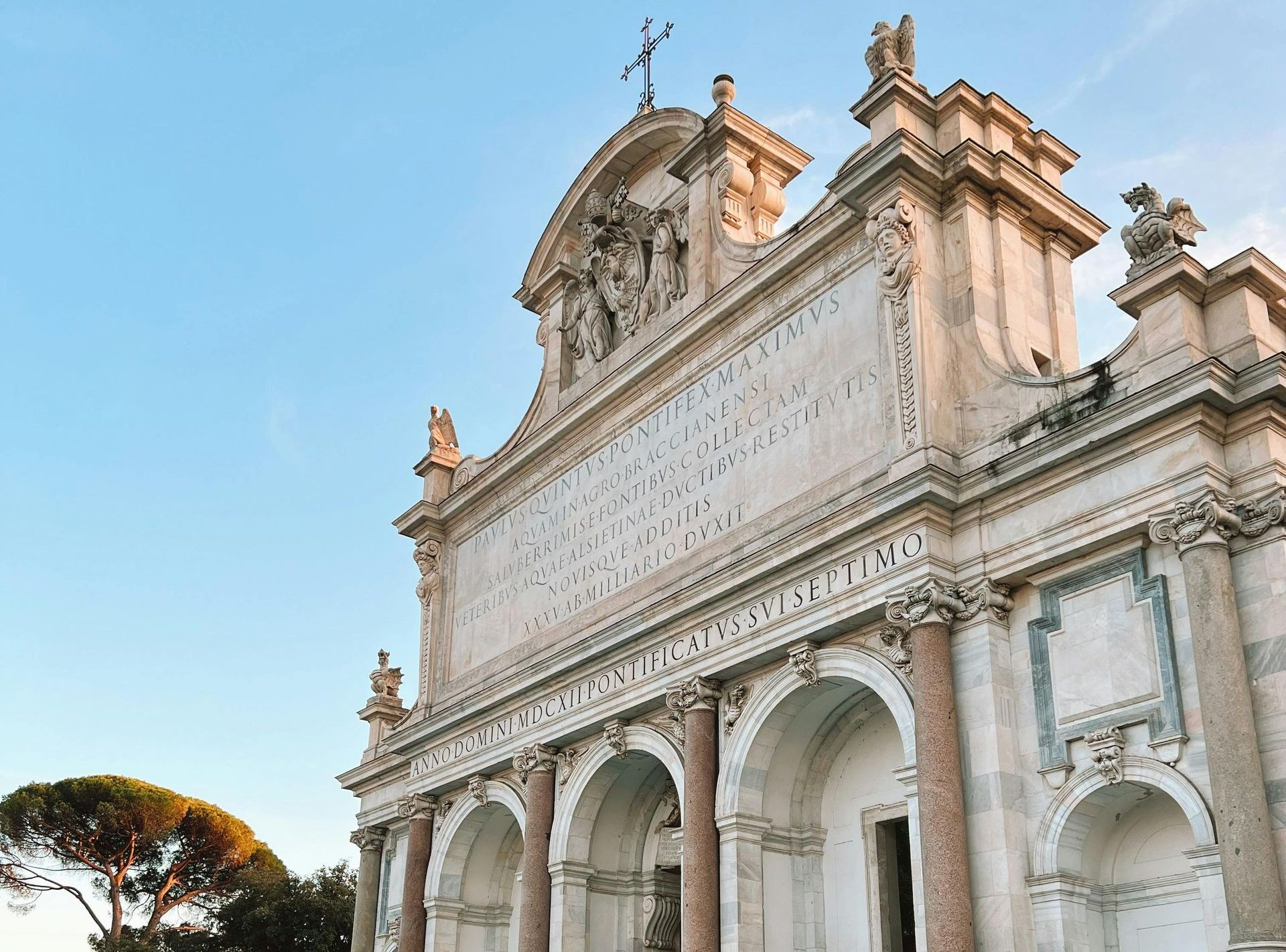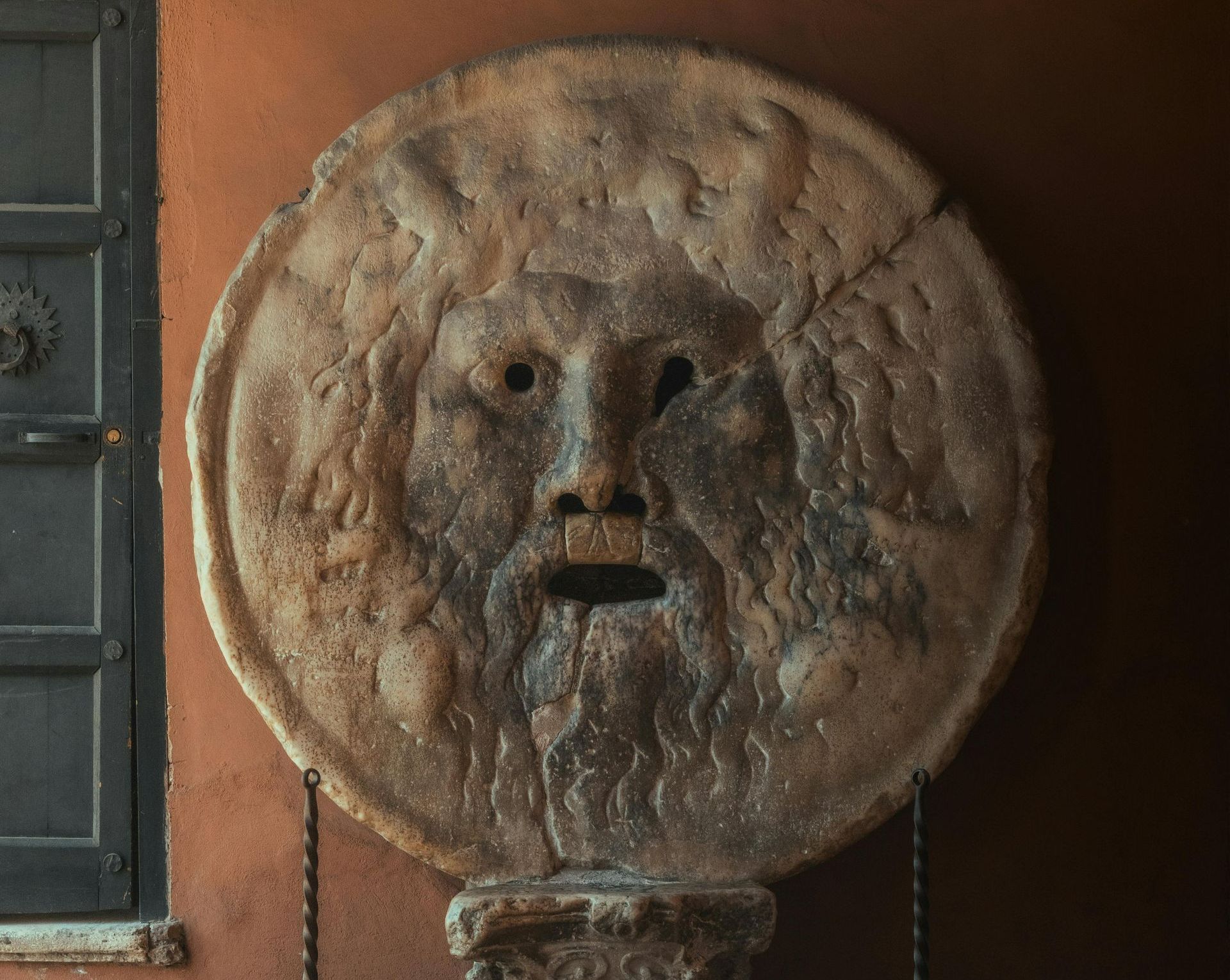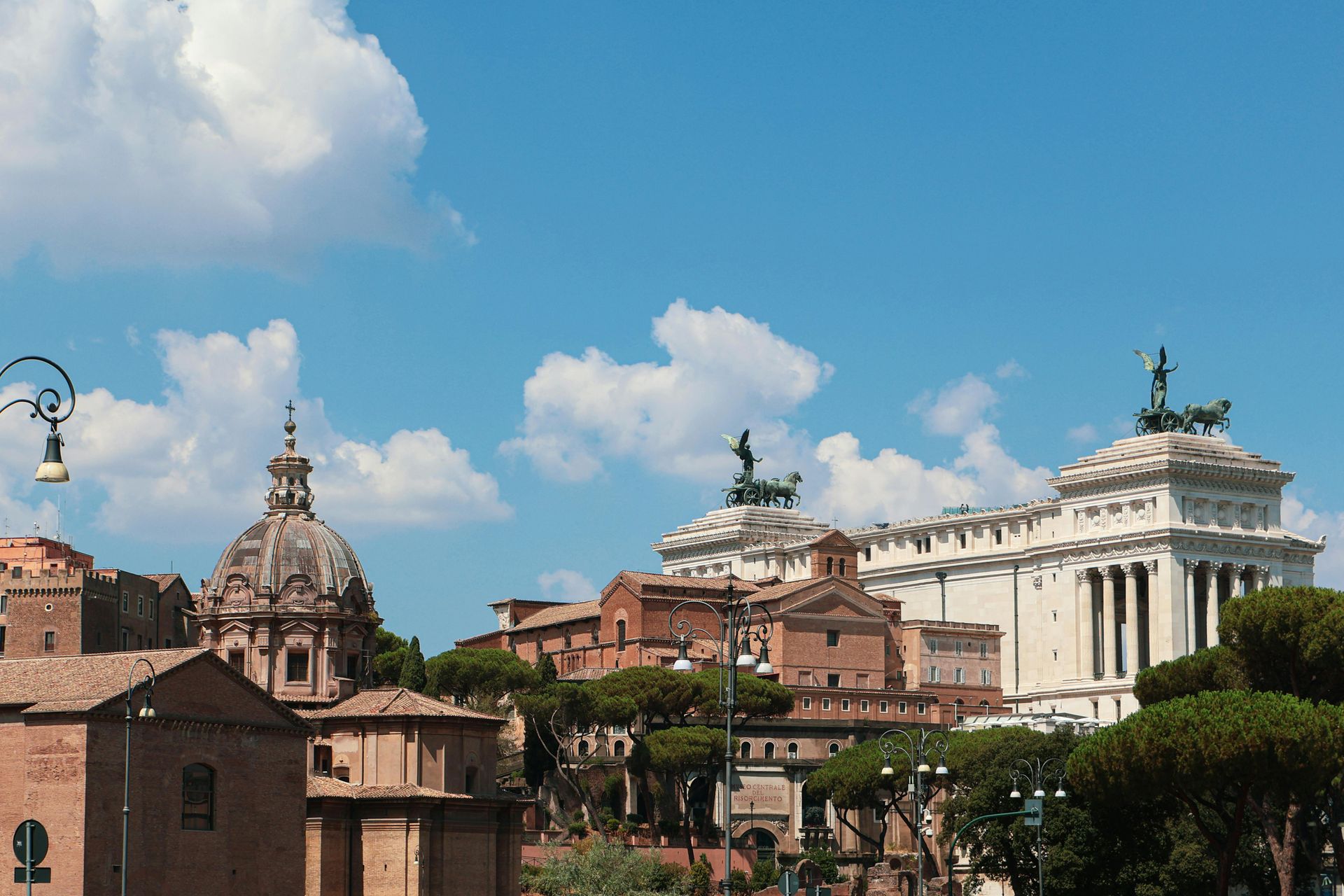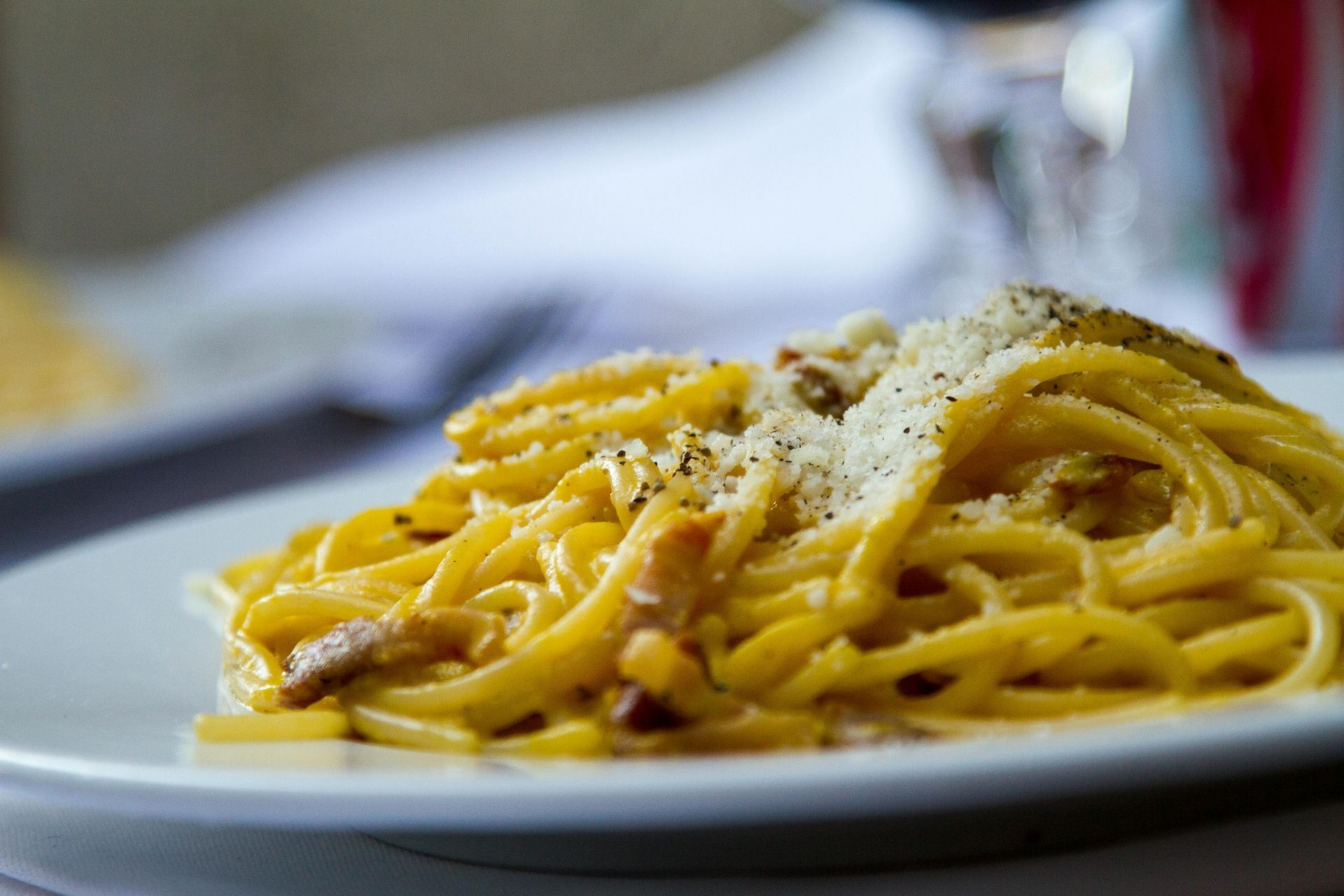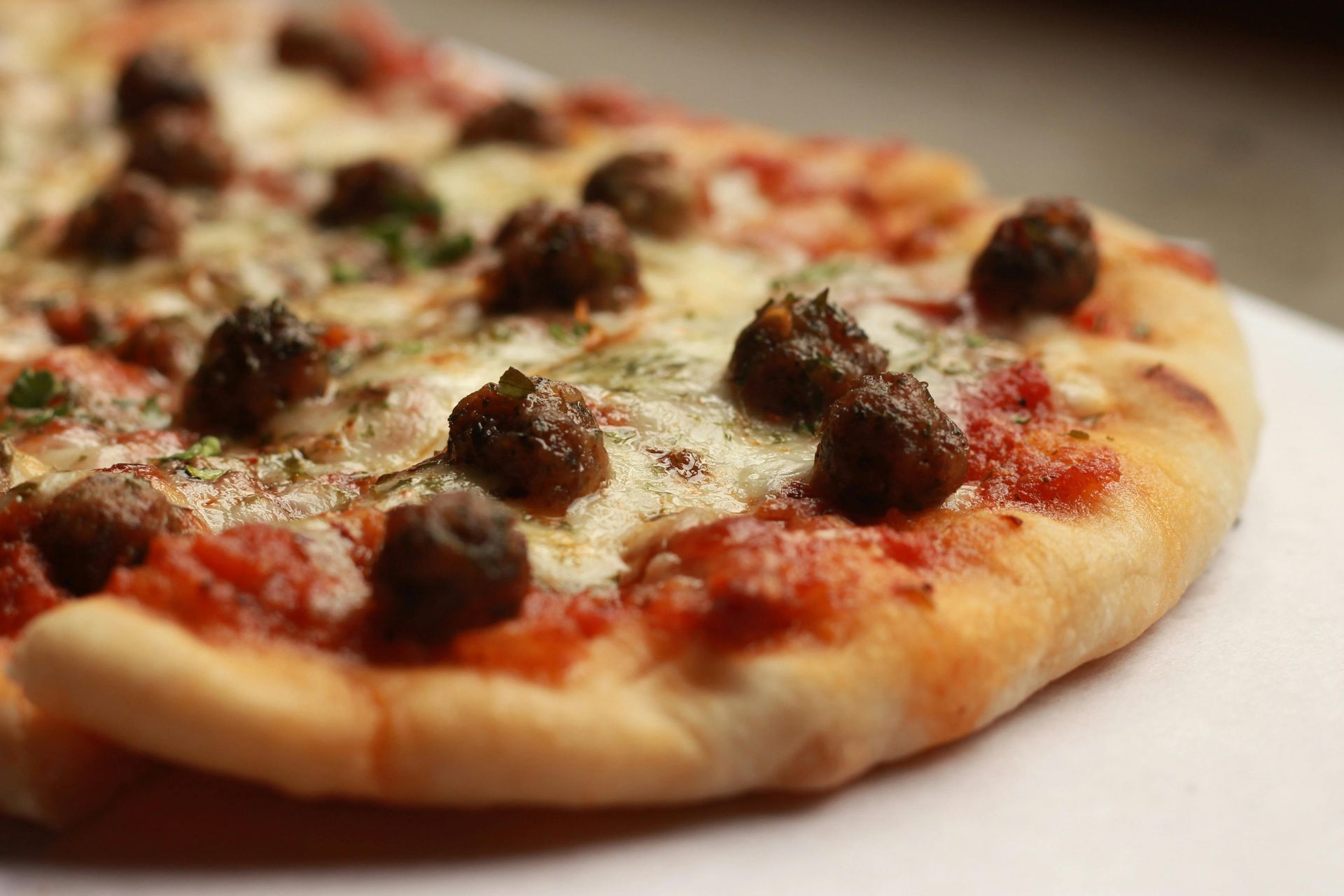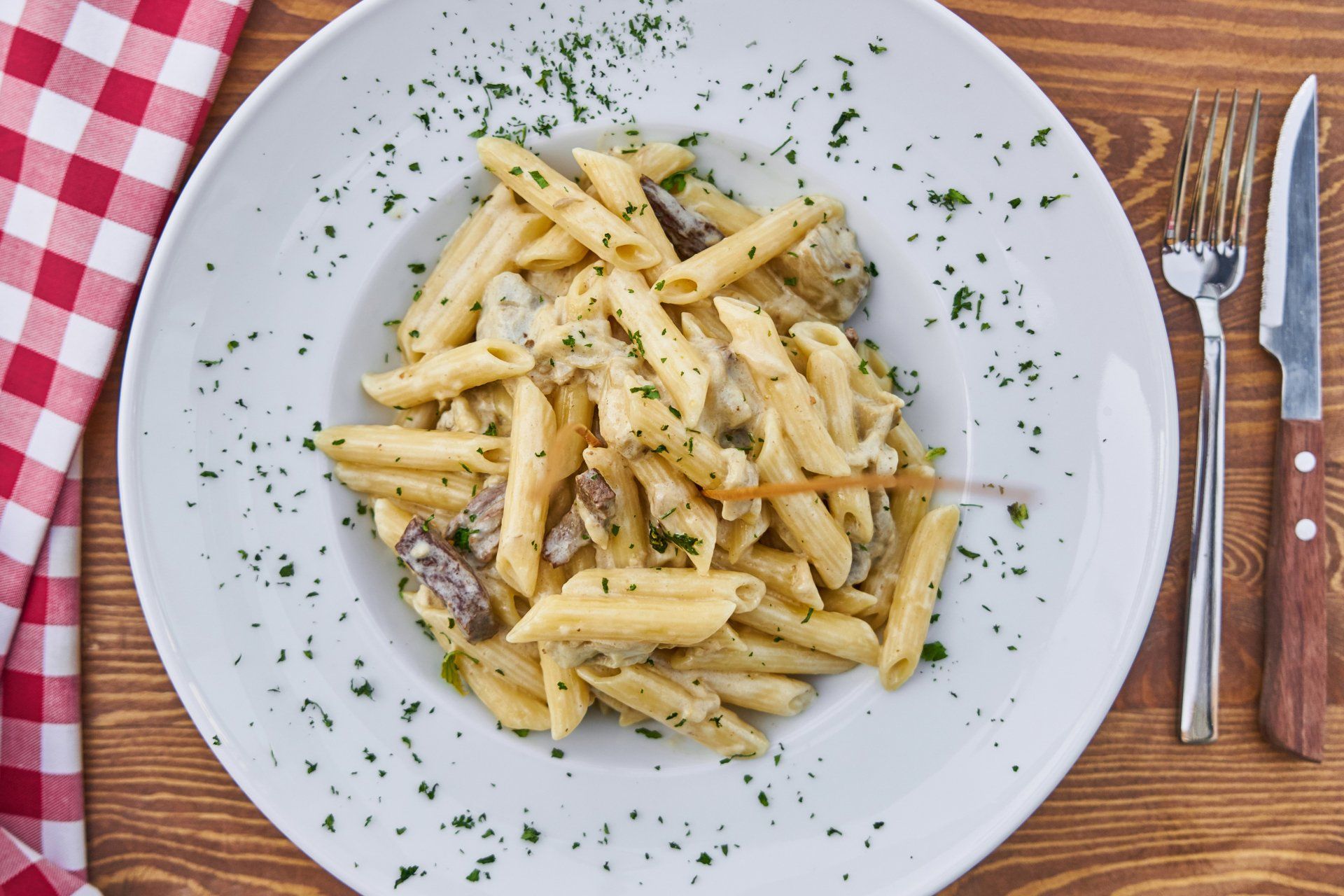3 Days in Rome: your first time in the Eternal city
Discalaimer: this guide covers a lot of attractions, but given the limited time of just three days, it may be challenging to visit everything in detail. We recommend prioritizing the sites that interest you most and keeping in mind that not all locations can be fully explored within this time frame. Rome’s treasures are endless, so consider this itinerary as a starting point for future visits!
Why spend 3 days in Rome?
Rome is one of the richest cities in the world. Three days in the Eternal City allow you to experience iconic landmarks, savor traditional cuisine and wander off the main tourist paths to uncover hidden gems.
Whether you’re an admirer of ancient ruins, Renaissance masterpieces or lively local culture, 72 hours in Rome promise a uniquely layered adventure. You’ll explore must-see attractions like the Colosseum and Vatican Museums while enjoying ample time to stroll through lesser-known attractions brimming with authentic Roman charm.
Andiamo! (Let’s go!)
Is 3 days long enough in Rome?
A common question is: “Is 3 days long enough in Rome?” Given the city’s vast heritage, you could spend weeks discovering every corner. However, three days can offer a fulfilling taste of Rome’s essence if you plan strategically.
Our Local Tip
- Focus on key areas: devote each day to a specific district, blending major attractions with local cultural experiences.
- Booking in advance: reserve tickets or tours for popular sites - like the Colosseum and Vatican Museums - ahead of time to save hours otherwise lost in lines.
Day 1: between modern & ancient Rome
Arrival and luggage drop-off
Rome is served by two major airports - Fiumicino (FCO) and Ciampino (CIA) - both located about 45 minutes from the city center under normal traffic conditions. Upon arrival, head straight to our office where you can store your luggage free of charge. This convenient service lets you dive into the city without the burden of suitcases.
Exploring the Colosseum and its surroundings
From our office, it’s just a 10/15-minute walk to the Colosseum, Rome’s most emblematic ancient monument. Should you decide to enter, note that ticket lines can be quite long, especially in high season. The same ticket also grants you entry to the Roman Forum and Palatine Hill, expansive areas that may take several hours to explore.
Our Local Tip
- Note on touring: venturing through the Forum and Palatine Hill without a guide could mean missing out on fascinating historical insights. Consider a guided tour not only to skip the lines but also to fully understand the city center of Ancient Rome. Skip the hassle and get right to the fun by booking your tour in advance - trust us, you’ll want to spend that extra time soaking in the sights, not waiting in line! You can check availability for a semi-private English tour of the Colosseum capped at 13 people - offering both convenience and a more intimate experience.
- Picture tip: you might also pause at Giardinetto del Monte Oppio, a small garden area offering a lovely vantage point and photo opportunity with the Colosseum in the background.
- San Pietro in Vincoli (St. Peter in Chains): just a short walk away, this basilica is home to Michelangelo’s famous statue of Moses, commissioned by Pope Julius II, who also tasked Michelangelo with painting the Sistine Chapel.
Colosseum FAQ
How long does it take to visit the Colosseum?
A typical visit to the Colosseum and Ancient Rome can take anywhere from 2 to 5 hours, depending on how deeply you wish to explore the site. If you opt for a guided tour, it might take a little shorter as you’ll save time to delve into the rich history and architecture.
Do I need to book tickets in advance?
Yes! Booking tickets in advance is highly recommended to avoid long lines and save precious time. The Colosseum is one of Rome’s most popular attractions, so pre-booking ensures you get priority access and skip the long queues. This also allows you to choose a time slot that fits your schedule.
What’s included in the Colosseum ticket?
General admission ticket (18€) to the Colosseum grants access to the Colosseum, the Roman Forum and Palatine Hill. These three sites are closely connected and the ticket allows you to visit them on the same day, so be sure to set aside enough time to explore all of them. If you want to make the most of your visit, consider booking a guided tour that covers all three sites. This allows you to spend more time appreciating the sights rather than waiting in line.
Is the Colosseum wheelchair accessible?
Yes, the Colosseum is wheelchair accessible, though it’s important to note that some areas may not be fully accessible. However, there is an elevator to assist visitors with mobility issues, and the Roman Forum and Palatine Hill also offer accessibility options.
What should I bring for my visit to the Colosseum?
- Comfortable shoes: you’ll be walking quite a bit, especially when exploring the Roman Forum and Palatine Hill.Water: stay hydrated, especially in the warmer months. There are fountains around the site where you can refill your bottle.Sunscreen and hat: the Colosseum and its surrounding areas don’t offer much shade, so protect yourself from the sun.
What are the Colosseum’s opening times?
From March 1st to 29th:
Do I need an ID for entering the Colosseum?
Yes, ID is required for all visitors entering the Colosseum, as all tickets are nominative (linked to the buyer’s name). When you purchase your ticket, make sure to bring a valid form of identification to match the name on your ticket, as this is required for entry.
Lunch in Monti neighborhood
After immersing yourself in Ancient Rome, head to Monti, a neighborhood known for its relaxed charm and cozy trattorias. For recommendations on local favorites, see our curated list of the best restaurants in Monti to savor authentic Roman cuisine.
Check-in and settling In
After lunch, return to your Bibbo Tours to check in and drop off your luggage in your room or apartment. A brief rest can be invaluable, especially if you’re eager to explore both ancient and modern Rome in one day.
An afternoon stroll through modern Rome
Your afternoon and early evening offer the ideal window to explore Rome’s bustling urban center, showcasing an intriguing blend of iconic landmarks and lesser-known spots:
- Trevi Fountain: toss a coin over your left shoulder to ensure a return to the Eternal City.
Our Local tip:
- On the right-hand side of the Trevi Fountain, there’s a small fountain that is usually uncrowded. Legend holds that couples who drink together from this fountain will remain in love forever. The legend says when a couple had to separate due to military campaigns, they would drink from this fountain the day before parting. Each would use a never-before-used glass; after drinking, they would break the glasses to seal their eternal love and guarantee the soldier’s safe return from war
- Nearby is Galleria Sciarra, a hidden Art Nouveau courtyard near Via del Corso, adorned with intricate decorative motifs.
- Sant’Ignazio di Loyola: famous for its trompe-l’œil ceiling frescoes that create an optical illusion of extended architecture. Nowadays also notable for its “magical” mirror that lets you admire the ceiling without craning your neck.
Our Local tip: pass by Tempio di Adriano (Temple of Hadrian) the imposing columns are remnants of a 2nd-century temple honoring Emperor Hadrian.
- Pantheon: this 2,000-year-old architectural marvel once served as a temple to all gods. Its massive unreinforced concrete dome remains a wonder to this day.
Our Local Tip:
- San Luigi dei Francesi houses three renowned Caravaggio masterpieces detailing scenes from the life of St. Matthew.
- Santa Maria Sopra Minerva: Rome’s Gothic church, with a unique blue-vaulted ceiling and important art by Michelangelo and Bernini. Admire also the obelique in front of church made by Bernini.
- Caffè Sant’Eustachio: Known for its artisanal coffee roasting, perfect for an afternoon boost. Also try their “crema di caffè” for a sweet afternoon boost.
- Piazza Navona: a baroque showcase centered around Bernini’s Fountain of the Four Rivers, bustling with cafés and street artists.
Our Local Tip:
- Santa Maria della Pace: a tranquil church near Piazza Navona, home to some of Raphael’s remarkable frescoes.
- Pasquino: one of Rome’s “talking statues,” historically used for anonymous satirical postings aimed at the powers that be.
- Campo de’ Fiori: a daytime market and an evening hub for socializing and people-watching. The square is also marked by the imposing statue of Giordano Bruno, a philosopher condemned for heresy and executed on this very spot in 1600. In earlier centuries, public executions took place here, adding a somber note to its otherwise lively ambiance.
- Jewish Ghetto: this historic district offers a unique blend of Roman and Jewish traditions, particularly evident in its cuisine.
Our Local Tip:
- Pass by Largo Argentina: where Julius Caesar met his fate here; the ruins now serve as a cat sanctuary.
- Fontana delle Tartarughe (Turtle Fountain): A charming Renaissance-era fountain adorned with bronze turtles, nestled in a quiet piazza.
- Taste a Roman delight: sample local Roman-Jewish and try the famous salt cod fillet at Dar Filettaro a Santa Barbara.
- Pasticceria Boccione: beloved for its rustic ricotta-and-cherry cake in the Jewish Ghetto.
- Chiesa del Gesù: the mother church of the Jesuits, featuring lavish Baroque interiors like the dome by Della Porta of the amazing frescos by Baciccia (Giovanni Battista Gaulli).
Our Local Tip:
- St. Ignatius’s Rooms: next door, these simple quarters are open from 4 PM to 6 PM and were once the living and working space of St. Ignatius of Loyola.
Sunset Views from Roman Forum & Piazzale Caffarelli
- As evening nears, ascend to Piazzale Caffarelli on the Capitoline Hill. From its terrace enjoy Teatro di Marcello in the distance, reminiscent of a smaller Colosseum, and the skyline of Rome.
Our Local Tip:
- Sweeping vistas over the Roman Forum as twilight descends.
- Stroll through Piazza del Campidoglio, designed by Michelangelo and home to the Lupa Capitolina (Capitoline She-Wolf) - the legendary emblem of Rome’s founding.
- The Statue of Marcus Aurelius, a rare surviving bronze equestrian monument of Ancient Rome saved only beacuase belived to be Costantine.
Day 2: Vatican Museums & Trastevere
After an immersive introduction to Ancient and Modern Rome on Day 1, it’s time to dive deeper into the city’s spiritual and cultural heart. Today’s itinerary spotlights the Vatican Museums - with its unparalleled art collections - and the bohemian charm of Trastevere, a vibrant neighborhood rich in tradition and local flavor.
Morning at the Vatican Museums & Saint Peter Basilica
Begin your day early by heading to Vatican City, the independent state within Rome that houses one of the world’s most significant art collections. From Renaissance masterpieces to ancient sculptures, the Vatican Museums encompass miles of galleries.
Start your day with a visit to the Vatican Museums and then make your way to St. Peter’s Basilica, one of the world’s largest and most magnificent churches.
How to reach the Vatican Museums
The Vatican Museums are located in the north side of the city. You can easily reach them by public transportation:
- Metro: take Metro Line A (the red line) and exit at the Ottaviano station, which is a 10-minute walk to the Vatican Museums entrance.
- Bus: several buses stop near the Vatican, including bus lines 64 and 40, which connect the city center with the Vatican area.
- Walking: if you’re staying near the city center, it’s a pleasant 30-minute walk through Rome's historic streets.
Visiting the Vatican Museums
The Vatican Museums house one of the most extraordinary art collections in the world, spanning centuries of masterpieces from the classical era to the Renaissance. With a regular ticket, you can access all the museums, but it's important to note that the collections are vast, and it could take several hours (or even an entire day) to see everything. Many visitors opt for a guided tour, which not only helps you bypass the long lines (thanks to priority entrance) but also ensures you see the highlights of the museums in a timely and meaningful way.
Our Local Tip
- Priority entrance: a guided tour will save you time and hassle by granting priority access to the museums, skipping the long queues.
- Tour duration: a guided tour typically lasts about 2 to 3 hours, which is the perfect amount of time to see the highlights without feeling rushed.
St. Peter's Basilica
After visiting the Vatican Museums, it’s time to explore St. Peter's Basilica - but with regular tickets, there's a challenge. Once your museum visit is over, you will need to exit through the museums and walk to the entrance of the Basilica (how long takes?), where you’ll encounter long lines and security checks. This could easily take another couple of hours.
- Our Local Tip: with a guided tour, you gain access to a special corridor that leads directly from the Sistine Chapel to St. Peter's Basilica. This bypasses the need to exit and re-enter, saving you precious time and allowing you to seamlessly continue your experience without the hassle of additional security lines. You can check the availability for our guided tours here.
- Enter St. Peter’s Basilica, one of the largest and most awe-inspiring churches in the world. Designed by some of the most renowned architects of the Renaissance, including Michelangelo and Bernini, the Basilica is an architectural wonder.
St. Peter's Basilica FAQ
Opening times
- Summer (1 April - 30 September): Opens at 7:00 AM | Closes at 7:10 PMWinter (1 October - 31 March): Opens at 7:00 AM | Closes at 7:10 PM
How long does the visit to Saint Peter's Basilica take?
A typical visit can last between 1 and 2 hours, but if you want to climb the Dome or visit the Vatican Grottoes, you will need more time.
Can I meet the Pope?
You can meet the Pope every Wednesday during the general audience (unless he’s traveling). Tickets are free and must be requested in advance via email to Prefettura della Casa Pontificia (ordinanze@pontificalisdomus.va).
Is Saint Peter's Basilica open on public holidays?
Yes, it’s generally open, but hours may vary, especially during major religious celebrations like Christmas and Easter.
When is Saint Peter's Basilica most crowded?
Descrivi l'elemento o rispondi alla domanda in modo che i visitatori interessati ricevano ulteriori informazioni. Puoi mettere in evidenza il testo con punti elenco, corsivo o grassetto, e aggiungere link.Is there a dress code for visiting Saint Peter's Basilica?
Yes, you are required to dress appropriately for a place of worship: shoulders and knees must be covered, for both men and women.
Our Local Tip:
- Michelangelo’s Pietà: admire at the entrance of the Basilica this early work of Michelangelo, which depicts the Virgin Mary holding the body of Christ after the crucifixion.
- The Baldachin and the Cattedra by Bernini: the monumental canopy over the altar of St. Peter’s is one of Bernini’s masterpieces and a symbol of the Basilica’s grandeur.
- Underground of the Basilica: close to the Baldachin, you’ll find access to the Vatican Grottoes, where you can visit the tombs of many Popes.
- Tomb of Alexander VII: don't miss the impressive tomb of Pope Alexander VII, designed by Bernini. It’s a stunning example of Baroque art and architecture.
- Tomb of Clemente XIII: take a moment to admire the tomb of Pope Clement XIII, sculpted by Canova, another masterpiece in the Basilica's collection.
- Optional: For an extraordinary view of Rome, you can climb to the top of the dome. While the climb is steep, the panoramic view of the city is worth the effort.
St. Peter's Square
St. Peter’s Square is one of the largest and most impressive piazzas in the world, designed by Gian Lorenzo Bernini. Its expansive space is dominated by a striking Egyptian obelisk at the center, surrounded by 284 columns that create an awe-inspiring embrace for visitors
Our Local Tip:
- Look for Nerone’s heart in the piazza: a fascinating legend tells us that Michelangelo carved a heart into one of the cobblestones of the square, marking an unfulfilled love. Another version of the legend claims that Gian Lorenzo Bernini, who designed the magnificent colonnade surrounding the piazza, sculpted the heart as a symbol of his own struggles with love. There’s even a version of the tale that says a woman carved the heart in memory of her husband, who was unjustly sentenced to death
- The perspective trick: Look closely at the ground, where you’ll find a round disk. The clever design of the square creates an optical illusion that makes the three rows of columns appear as though they blend into one.
- The Egyptian obelisk: Originally brought to Rome by Emperor Caligula in 40 AD, the Egyptian obelisk was later moved to its current location by Pope Sixtus V in 1586 as part of a larger renovation project to reshape the square. This fascinating obelisk has stood the test of time, and there’s a legend surrounding the globe at its base, suggesting that it may contain the ashes of either St. Peter or Julius Caesar—both figures of monumental importance in Roman and Christian history.
La passeggiata del Gianicolo
After visiting St. Peter’s Basilica, head to the Gianicolo Hill for a beautiful walk that will lead you to the charming Trastevere neighborhood.
Our Local Tip
- Piazzale Garibaldi: at the top of Gianicolo Hill, you’ll be treated to one of the best panoramic views of Rome. The vista stretches across the city, offering a breathtaking sight of its domes, churches and the Tiber River.
- Listen for the cannon: every day at noon, a cannon shot rings out from the hill as part of an old Roman tradition, a ritual that has been carried on since 1847.
- Fontana dell’Acqua Paola: a monumental Baroque fountain that not only offers a lovely spot to rest but also boasts stunning views over the city. The fountain itself is an impressive piece of architecture, designed to commemorate Pope Paul V’s efforts to restore water to the city.
- Tempietto di San Pietro in Montorio: designed by the Renaissance architect Donato Bramante, this small, elegant temple is one of Rome’s hidden architectural gems
Lunch in Trastevere
By now, you’ve likely worked up an appetite. Head to the nearby Trastevere neighborhood for lunch. Here, you’ll find a mix of casual trattorias and family-owned eateries serving hearty Roman staples like Cacio e Pepe, Amatriciana and Carbonara.
Check out our recommendations in the best restaurants in Trastevere for an authentic culinary experience.
Afternoon in Trastevere
Trastevere is a neighborhood characterized by its narrow cobblestone streets, medieval buildings and bohemian charm. It’s the perfect place to explore on foot, where ivy-draped facades, small artisan shops and vibrant squares invite you to slow down and take in the sights and sounds of local life.
The heart of the neighborhood is Piazza di Santa Maria in Trastevere, home to the Basilica of Santa Maria in Trastevere, one of the oldest churches in Rome. Its gold mosaics made by Cavallini sparkle in the afternoon sun.
Our Local Tip
- Villa Farnesina: hidden near the Tiber River, this 16th-century villa is a masterpiece of Renaissance art. It features beautiful frescoes by Raphael, making it a quiet and artistic escape from the bustling streets of Trastevere.
- Biscottificio Innocenti: stop by this charming local bakery for some authentic Roman biscuits (biscotti) or traditional Roman pastries like “Ciavattone”.
- Basilica di Santa Cecilia: this peaceful church is a true hidden gem. It holds a beautiful interior and a rich history, with the statue of Saint Cecilia by Maderno under the main altar. Maderno is the same artist who designed the façade of St. Peter’s Basilica. Don't miss the captivating atmosphere of this lesser-known basilica.
- Chiesa di San Francesco a Ripa: visit this baroque church, where St. Francis of Assisi once stayed. Admire the Estasi della Beata Ludovica Albertoni, the last masterpiece by Gian Lorenzo Bernini, as well as the altar by Giovanni Battista Gaulli, also known as Baciccia.
- Chiesa di Santa Maria dell’Orto: the church stands where fields and orchards once existed. Over time, a small chapel was built and later expanded into the Confraternity of Madonna dell'Orto. Various local Roman guilds contributed to the decoration of the church, which now showcases works by Taddeo and Federico Zuccari, Giovanni Baglione, and others.
Isola tiberina, Santa Maria in Cosmedin & Circus Maximum
Cross the river to discover Isola Tiberina, Rome’s charming island in the Tiber. Here, you can visit the Basilica of St. Bartholomew on the Island, a medieval church known for its peaceful atmosphere and the cannonball embedded in its walls, left as a memory of a historical event.
Our Local Tip
- Foro Boario: while you reach Santa Maria in Cosmedin, take a moment to explore the Foro Boario, one of the oldest marketplaces in ancient Rome. As you wander through this area, you’ll find the Tempio di Ercole Vincitore, one of the oldest round temple in Rome, dating back to the 2nd century BCE. This well-preserved temple is a striking example of the Roman economic power of the time. It was built by merchants who had become wealthy enough to commission works designed by Greek artists.
- Santa Maria in Cosmedin: this historic church is famous for housing the Bocca della Verità (Mouth of Truth), a marble mask that legend says will reveal whether someone is telling the truth or lying.
Sunset at the Giardino degli Aranci
While admiring the Circus Maximus, take a moment to climb the Comunal Roseto (Municipal Rose Garden). It’s a peaceful spot, perfect for a short walk among the fragrant roses. From here, continue your journey to Giardino degli Aranci (Orange Garden), located on Aventine Hill, where you can enjoy yet another breathtaking panorama of Rome's iconic skyline. At the Terrace of the Belvedere in the Giardino degli Aranci, you'll find one of the most stunning viewpoints in the city.
Our Local Tip:
- Check the keyhole: while in the Giardino degli Aranci, make sure to visit the famous keyhole of the Knights of Malta. Look through the keyhole of the door at the Priorato dei Cavalieri di Malta and you’ll see a perfectly framed view of St. Peter’s Basilica, aligned with the greenery and the path leading to it. It's one of Rome’s best-kept secrets, offering a unique perspective of the city’s most iconic landmark.
- Dinner in Testaccio: after exploring the beauty of the Aventine Hill, head to Testaccio for a true Roman dinner. Known for its authentic, traditional Roman cuisine, Testaccio is the perfect place to experience hearty dishes like Coda alla Vaccinara (oxtail stew) or Abbacchio (roast lamb). This neighborhood offers a more local atmosphere compared to other more touristy districts, so you’ll enjoy an intimate dining experience.
Day 3: exploring iconic squares and hidden gems
On your final day in Rome, we’ll cover some of the city’s most iconic landmarks, hidden treasures and beautiful viewpoints, all while embracing the local culture and traditions. From admiring the Spanish Steps to exploring Villa Borghese, this day will give you the full Roman experience.
Check out and luggage drop-off at Bibbo’s office
Start your day by checking out of your accommodation and heading to Bibbo’s office to drop off your luggage. With your belongings safely stored, you can enjoy the last day in Rome without worrying about your bags.
Italian breakfast at Taliani
After leaving your luggage at the office, head to Taliani, a charming café known for its classic Italian breakfast. Enjoy a freshly brewed espresso or cappuccino paired with a delicious cornetto (Italian pastry) and indulge in the local tradition of starting the day with a simple yet satisfying meal.
Heading to Piazza di Spagna
Your first stop is the iconic Piazza di Spagna, one of Rome's most famous squares, known for its beautiful Spanish Steps and the stunning Trinità dei Monti church at the top.
Our Local Tip
- San Carlino alle Quattro Fontane: on your way to Piazza di Spagna, make a quick stop at the beautiful San Carlino alle Quattro Fontane, designed by Francesco Borromini. This small Baroque church is a hidden gem, tucked away at the intersection of four streets, that offers a chance to admire Borromini’s signature use of curves and light.
- Palazzo Barberini: a quick visit to Palazzo Barberini will allow you to admire the staircases designed by both Borromini and Bernini - two masters of Baroque architecture. The contrasting designs showcase the tension between their styles and offer insight into their creative genius.
- Piazza del Tritone: don’t forget to make a brief stop at Piazza del Tritone, home to the famous Triton Fountain, sculpted by Bernini. The fountain, with its powerful depiction of the sea god Triton, is a true masterpiece and offers a beautiful photo opportunity. It’s a wonderful spot for a photo opportunity and to admire one of Bernini’s lesser-known but equally impressive works
- Palazzo Zuccari: on your walk, take a moment to look at Palazzo Zuccari, a building known for its eccentric façade, which features windows shaped like eyes, giving it a unique and somewhat eerie appearance. It’s a small but intriguing part of the city’s architectural landscape.
Piazza di Spagna
Arriving at Piazza di Spagna, take time to admire its grand beauty. The steps are one of the most famous landmarks in Rome and provide a stunning view of the piazza and beyond.
Our Local Tip
- Trinità dei Monti: at the top of the Spanish Steps, visit the Church of Trinità dei Monti, a beautiful 16th-century church with panoramic views of the city.
- Fontana della Barcaccia: in the middle of the piazza, admire the Fontana della Barcaccia, designed by Pietro Bernini (father of Gian Lorenzo Bernini). The fountain’s design is inspired by a boat. Legend has it that Pietro Bernini was inspired by an extraordinary event during a flood in 1598. When the Tiber River overflowed, a fishing boat was left stranded in the center of the square, and Bernini immortalized this image in his design.
Stroll down via Condotti and via del Corso
After visiting the Spanish Steps, take a leisurely stroll down Via Condotti, one of Rome's most famous shopping streets. Admire the luxury boutiques and window displays along the way before heading towards Via del Corso, a bustling street filled with shops.
Continue walking and reach Piazza del Popolo, another iconic Roman square, known for its twin churches and the ancient Egyptian obelisk in the center.
Our Local Tip
- Basilica di Santa Maria del Popolo: this church is home to stunning works of art, including Caravaggio’s “The Crucifixion of St. Peter” and “The Conversion of St. Paul.” Take a moment to admire these masterpieces and the beautiful interiors.
- Roman defensive wall: As you explore the square, take note of the Roman defensive wall that once encircled the city. This historical feature provides insight into Rome's ancient defensive strategies.
Climbing to Villa Borghese
From Piazza del Popolo, make your way to Villa Borghese, one of Rome’s most beautiful public parks. As you climb the hill, you’ll reach Terrazza del Pincio, a viewpoint that offers one of the best panoramic views of Rome. It’s the perfect spot to take in the city’s skyline, with the Vatican and Castel Sant'Angelo in the distance.
Our Local Tip:
- Villa Borghese: If time permits, consider renting a bike or a tandem bicycle to explore the expansive Villa Borghese Gardens. Ride through the park and reach the famous Galleria Borghese, home to masterpieces by Caravaggio, Bernini and Raphael.
Optional: Coppedé District
If you have extra time, consider a visit to the Coppedé District, a hidden architectural gem in Rome. This area is known for its unique mix of Art Nouveau, medieval and Baroque styles. The Piazza Mincio in the Coppedé District is home to the famous Coppedé Fountain, designed by Giovanni Piranesi.
Porta Pia and Santa Maria della Vittoria
Head towards Porta Pia, an important gate in Rome’s Aurelian Walls, designed by Michelangelo. The gate is famous for being the site of the final battle between the Papal forces and the Kingdom of Italy during the Capture of Rome in 1870.
From Porta Pia, walk along Via XX Settembre to Santa Maria della Vittoria, a stunning church known for its Ecstasy of St. Teresa by Bernini, a Baroque masterpiece.
Our Local Tip
- Moses fountain: On your way, stop by Moses Fountain, a beautiful Baroque fountain located along Via del Quirinale, where you can admire the statue of Moses.
- Sant’Andrea al Quirinale: don’t miss this beautiful church designed by Bernini, where you can appreciate the baroque architecture and its stunning interior.
Back to Bibbo Office
After an exciting and eventful day, head back to Bibbo’s office where your transfer will be waiting to take you to your next destination or to the airport, concluding your unforgettable Roman adventure.
Conclusion: your 3 days in Rome
By following this thoughtfully curated itinerary, you’ll explore iconic landmarks like the Colosseum and the Vatican Museums, while also venturing off the beaten path to uncover hidden gems that only locals know about. Whether you’re marveling at the Baroque beauty of Piazza Navona, strolling through the charming streets of Trastevere, or relaxing in the serene gardens of Villa Borghese, Rome will captivate your heart and soul at every turn.
Our goal is to ensure you experience Rome like a local, with insider tips, personalized recommendations, and a touch of Roman hospitality. From the moment you drop off your bags at our office to the last view of the city’s skyline, every moment in this incredible city is meant to be cherished.
So, buon viaggio and enjoy every moment. We hope that your three days in Rome will leave you with memories to last a lifetime, and that, like many before you, you’ll find yourself planning your next Roman adventure before you even leave!














